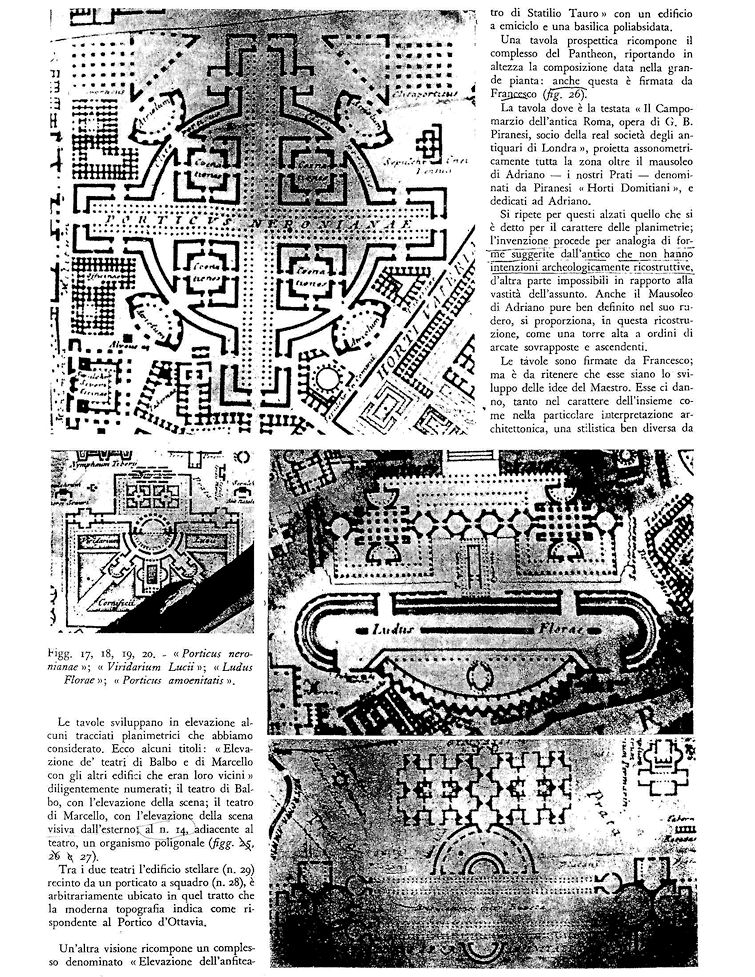
| |
The plates develop in elevation some of the plan layouts which we have considered. Here are some of the titles: "Elevation of the theaters of Balbus and Marcellus with the neighboring buildings" diligently numbered: the theater of Balbus , with an elevation of the stage; the theater of Marcellus, with an elevation of the stage viewed from the exterior; adjacent to the theater, a polygonal edifice.
Between the two theaters a star-shaped building enclosed by a right-angled arcade, arbitrarily placed in the area that modem topography indicates as corresponding to the Portico of Octavian.
Another vision reconstructs a complex called "Elevation of the amphitheater of Statilio Tauro" with a semicircular building and a multi-apsed basilica.
The third perspective view reconstructs the Pantheon complex, relating in three dimensions the composition presented in the large plan.
The plate with the heading "The Campomarzio of ancient Rome, work of G. B. Piranesi, member of the Royal Society of Antiquarians of London" axonometrically projects the zone beyond the Mausoleum of Hadrian - the present day Prati - named by Piranesi The Gardens of Domitian ("Horti Domitiani") [sic], and dedicated to Hadrian.
One can repeat for these elevations what was said about the character of the plans: the invention proceeds by analogy to forms suggested by the antique which do not have intentions of archeological reconstruction, which are in any case impossible in relation to the vastness of the enterprise. Even the mausoleum of Hadrian, although well defined as to the ruin, is proportioned, in this reconstruction, as a high tower with a superimposed and ascending series of arcades.
The plates are signed by Francesco [sic], but we must remember that they are the development of the ideas of the master. They give us, in the character of the whole as well as in the particular architectural interpretation, a style very different from the mainly decorative one for which Piranesi is more commonly known: a clear and immediate revelation of the volumes which is essentially constructive; in the elevations, architectural modeling which is grammatically derived from the Roman model.
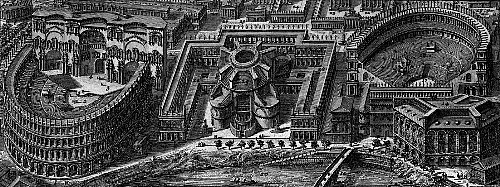
The engravings at the end of Il Campo Marzio are not the work of Francesco Piranesi, rather they are signed Piranesi, F meaning made by Piranesi.
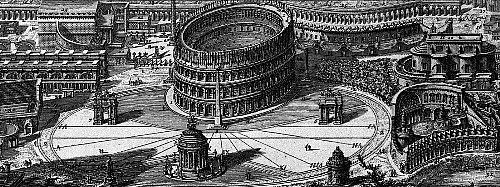
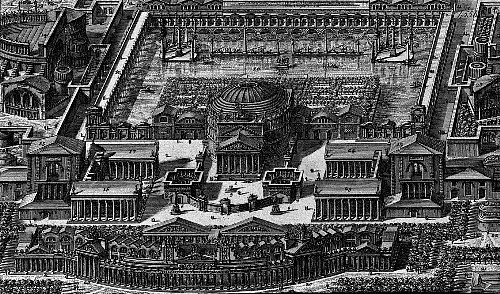
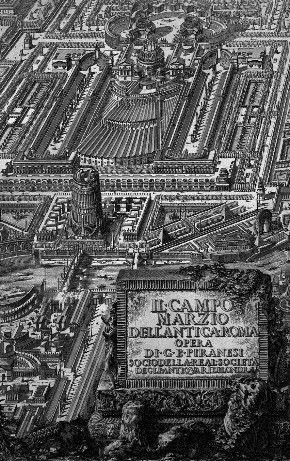
|




